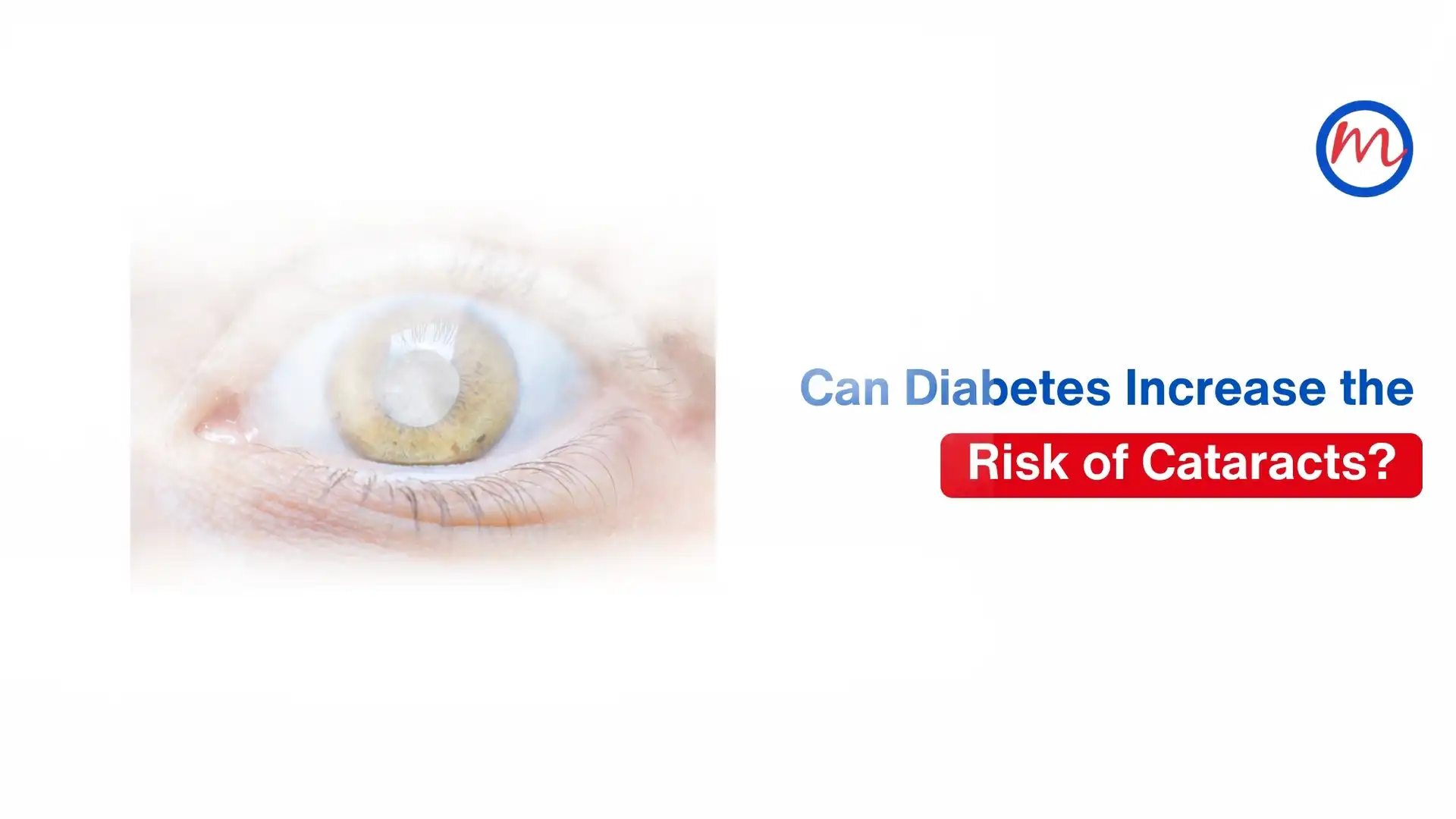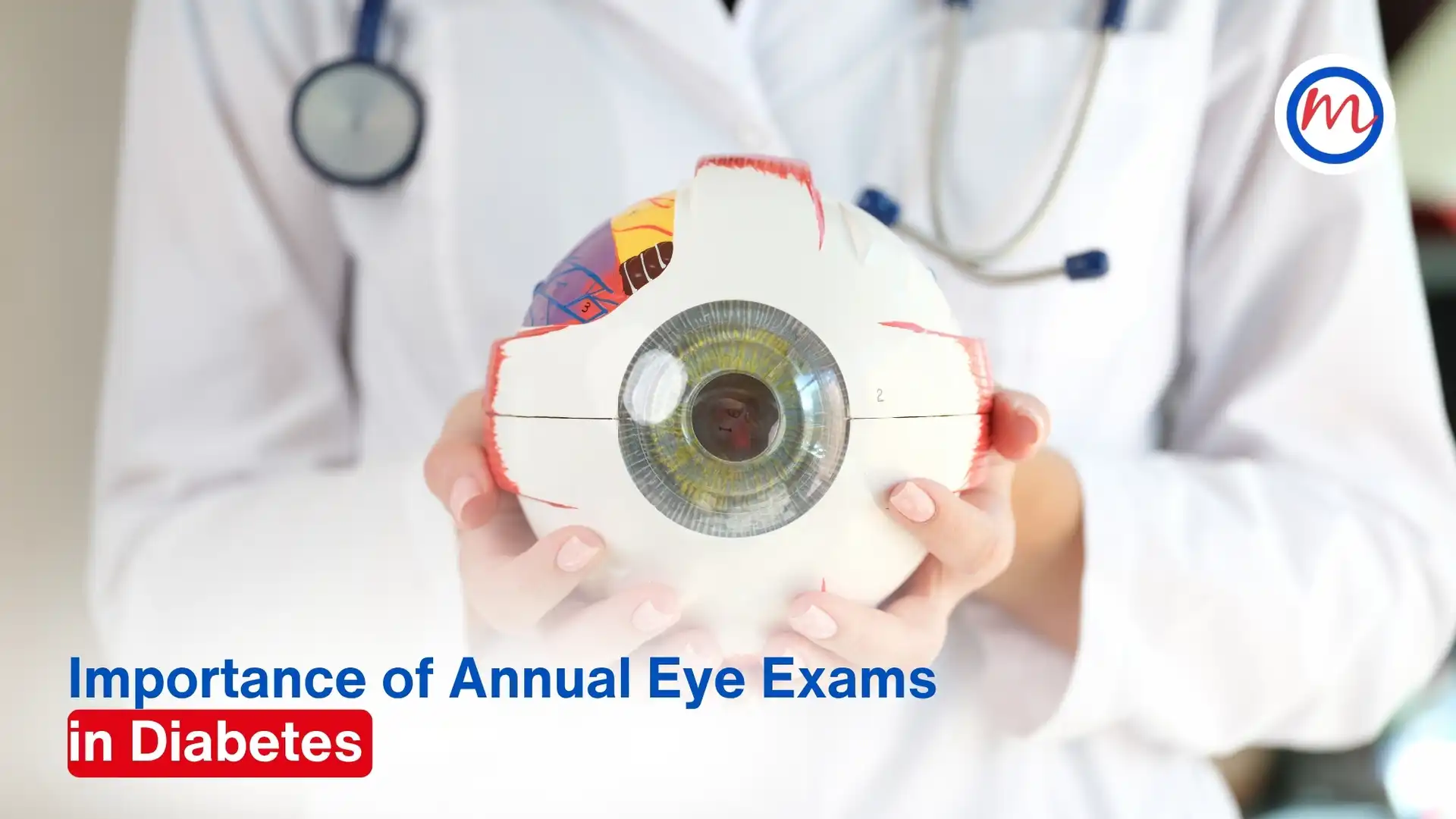Can Diabetes Increase the Risk of Cataracts?
Introduction
If you are living with diabetes, it is important to keep an eye on more than just your blood sugar levels — your actual eyes need care too. One common but often overlooked eye problem in people with diabetes is cataracts. While cataracts are commonly linked to ageing, individuals with diabetes are at a significantly higher risk of developing cataracts earlier in life.
In this article, we will explain the link between diabetes and cataracts, symptoms to watch out for, and tips to protect your vision.
What Are Cataracts?
Cataracts occur when the natural lens of the eye becomes cloudy, leading to blurred or hazy vision. The lens, which is usually clear, helps focus light on the retina. When it becomes cloudy, light doesn’t pass through as easily, causing vision problems.
This condition is progressive, meaning it worsens over time. In most people, cataracts develop slowly with age, but for people with diabetes, it can happen faster and earlier.
How Does Diabetes Cause Cataracts?
People with long-standing or poorly controlled diabetes are at a greater risk of cataracts due to the effects of chronically high blood sugar on the lens of the eye. Here is how it works:
- High glucose levels enter the lens of the eye and are converted to a substance called sorbitol.
- Sorbitol accumulates, drawing water into the lens and disrupting its clarity.
- Over time, this causes the lens to swell and become cloudy, forming a cataract.
Even brief periods of poor blood sugar control can speed up this process.
Who Is at Risk?
You may be at higher risk for cataracts if you:
- Have Type 1 or Type 2 diabetes
- Have had diabetes for several years
- Have poorly controlled blood sugar levels
- Are over the age of 40
- Smoke or have high blood pressure
Symptoms of Cataracts in People with Diabetes
Cataracts develop gradually, and early signs may be subtle. Look out for:
- Blurry or cloudy vision
- Sensitivity to light or glare
- Difficulty seeing at night
- Faded colours
- Double vision in one eye
- Frequent changes in eyeglass prescription
If you experience any of these symptoms, consult an ophthalmologist for an eye exam.
How to Prevent or Delay Cataracts if You Have Diabetes
While cataracts cannot always be prevented, you can delay their progression by taking good care of your health.
- Control Your Blood Sugar
Keeping your blood sugar levels within the recommended range helps slow lens damage.
Explore: How Lifestyle Changes Help in Diabetes
- Get Regular Eye Check-Ups
Schedule a comprehensive eye exam once a year, even if you don’t have vision problems. Early detection can prevent complications.
Learn more: Importance of Regular Eye Exams
- Protect Your Eyes from UV Light
Wear sunglasses when outdoors to reduce sun damage to your eyes.
- Stop Smoking
Smoking increases cataract risk and worsens diabetic complications.
- Eat Eye-Friendly Foods
Add leafy greens, carrots, citrus fruits, and foods rich in antioxidants to your daily diet
When Is Cataract Surgery Needed?
If cataracts begin to interfere with your daily life, such as reading, driving or watching television, your doctor may recommend cataract surgery. It is a safe and effective procedure in which the cloudy lens is removed and replaced with an artificial one.
For people with diabetes, it is important that blood sugar is well-controlled before and after surgery to prevent complications.
Conclusion
Yes, diabetes can significantly increase the risk of developing cataracts, and often at a younger age than expected. But the good news is that with early detection, regular eye exams and blood sugar control, you can slow down cataract formation and protect your vision. Don’t ignore minor vision changes — they might be early signs of something serious.
For expert eye care and diabetes management under one roof, consult the team at Dr. Mohan’s Diabetes Specialities Centre.



